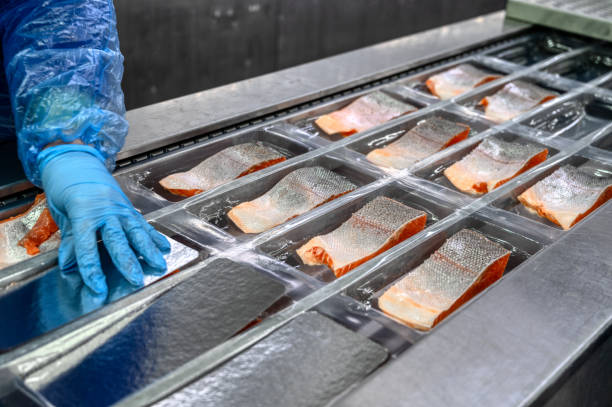

Modern fish processing has evolved far beyond hand-operated filleting and basic cleaning. Advanced technology and equipment have actually reinvented the industry, making operations quicker, more secure, and more constant. From automated fillet cutters to clever batching systems, equipment currently ensures top notch result while minimizing labor expenses. For both large factories and smaller procedures, comprehending the important tools utilized in contemporary fish processing is critical to improving efficiency and product uniformity.
One of one of the most transformative pieces of equipment in fish processing is the computerized fillet cutter. These devices are developed to deal with various species and sizes of fish with precise cuts, making sure uniform fillets. Using sensing units and programmable guides, the cutters reduce waste and boost return. Operators can monitor the system while makers do repeated jobs, freeing staff to focus on quality assurance. The uniformity accomplished with automated fillet cutters is impossible to match with hand-operated methods.
Modern seafood processing greatly counts on batching systems to improve production. A batching system automates ingredient mixing, portioning, and sequencing, ensuring each batch satisfies rigorous specifications. This lowers human error and keeps product uniformity, particularly in ready fish products like seasoned fillets or pre-portioned seafood packs. By incorporating with various other equipment, batching systems maximize operations, allowing factories to process bigger volumes without compromising quality. They are important for keeping efficiency in affordable production environments.
https://www.youtube.com/embed/mgy-NBiDDPk?si=AO4WAuIfCOkRVy3h
Before filleting, fish must be gutted and cleaned effectively. High-speed gutting machines automate this labor-intensive task, getting rid of interior body organs while keeping the fillet intact. These equipments are outfitted with sensing units that change based upon fish size, ensuring marginal waste. Advanced cleansing systems additionally clean and sanitize the fish, preserving health criteria and preparing them for packaging or more processing. Using such equipment not just accelerates operations but also boosts product security, which is critical in seafood processing.
Temperature control is important in maintaining fish quality and freshness. Modern fish processing centers make use of blast freezers, IQF (individually fast icy) systems, and cooling devices to manage huge quantities of fish effectively. These makers quickly reduce temperature level to lock in quality, protect appearance, and stop microbial development. Incorporating exact temperature level control with automated dealing with guarantees that fish are stored securely until packaging or shipping. Efficient freezing and chilling devices are indispensable for preserving consistent quality across all batches.
As soon as processing is total, product packaging devices and quality control tools play a vital role in modern-day seafood processing. Automated packaging systems part fish properly, vacuum cleaner seal for freshness, and tag products efficiently. Quality assurance sensors identify imperfections, weight disparities, or flaws, ensuring that only the highest-standard products get to the market. Integrating these systems with upstream equipment, including batching systems, produces a seamless workflow, increasing both performance and product integrity.
Modern fish processing counts on a combination of automated equipments, clever batching systems, and human oversight to maintain efficiency and quality. From fillet cutters and gutting machines to cold and product packaging systems, every piece of equipment is made to minimize waste, boost uniformity, and enhance process. For companies aiming to compete in the seafood processing industry, investing in these innovations is essential. Recognizing the tools made use of today guarantees drivers can make best use of production, keep product quality, and meet market needs effectively.